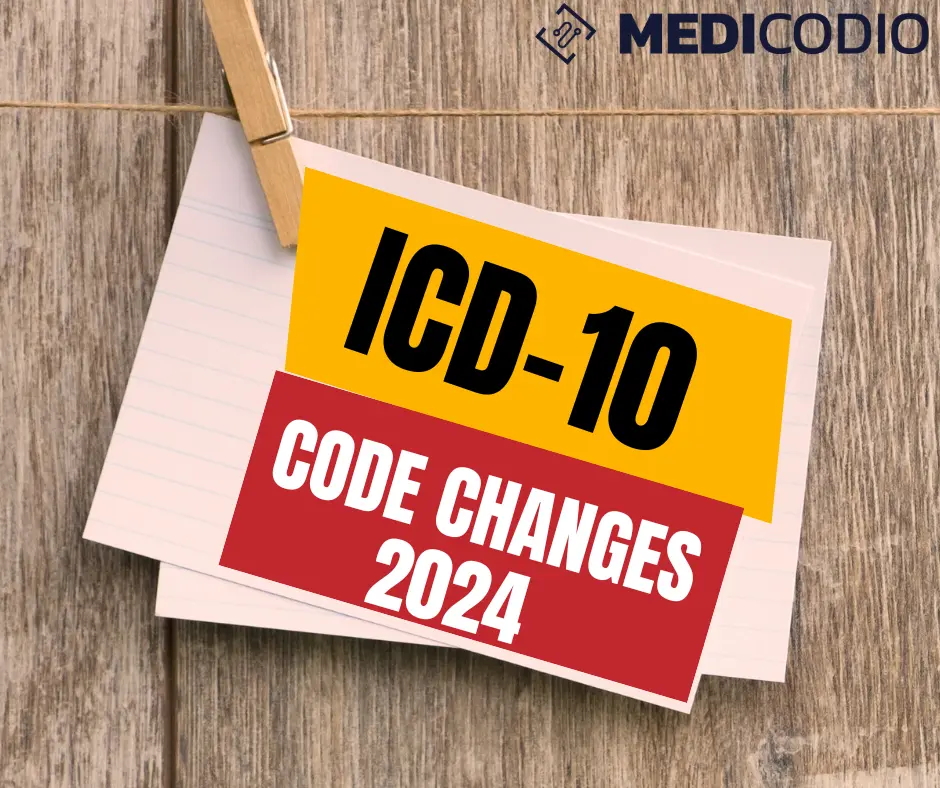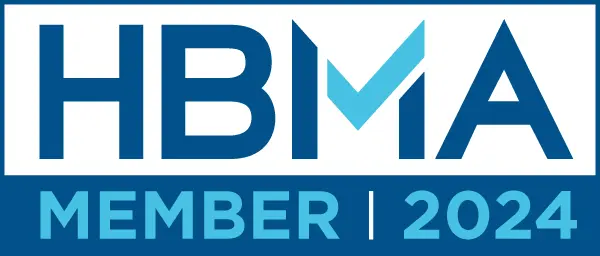Did you know that the Centers for Medicare & Medicaid Services (CMS) have announced significant changes to the ICD-10-CM code set for fiscal year 2024?
These proposed changes encompass the introduction of 395 new codes, the removal of 25 existing codes, and the modification of 22 codes. These adjustments will significantly affect how individual medical coders and healthcare organizations manage their finances.
ICD-10-PCS will introduce 78 new codes, revise 14 titles, and eliminate 5 codes.
What’s changed in the 2024 ICD-10-CM CODE SET?
Here are some specific modifications in the 2024 ICD-10-CM code set:
-
- New codes are being introduced in several categories, such as Parkinson’s disease, osteoporosis with pathological fractures, chronic migraines, neoplasms and tumors, intrahepatic cholestasis of pregnancy, retinopathy, and codes to accurately describe external causes. A new category has been added: W44 Foreign body entering into or through a natural orifice for more serious objects such as glass (W44.C1), and button batteries (W44.A1).
-
- In addition, a new code for acute appendicitis (K35.200-K35.211, K35.219)
-
- Latest codes to identify insulin-resistant metabolic syndromes A and B: (E88.810-E88.819)
-
- Numerous Z codes have been added to represent cases where caregivers don’t comply with a patient’s medication regimen, renal dialysis, and other medical treatments. For instance, Z91.A41 (Caregiver’s noncompliance with patient’s medication regimen due to financial hardship) is one such addition.
-
- Additional new codes have been created to represent child-guardian relationships, such as Z62.23 (Child in custody of non-parental relative).
-
- Examples of revised ICD-10-CM codes include I71.51, I71.52, I71.61, and I71.62, pertaining to supra-celiac and paravisceral aneurysms of the abdominal aorta with or without rupture. The term “abdominal aorta” has been updated to specify “thoracoabdominal aorta.” These revisions ensure that healthcare organizations accurately bill for the precise anatomical location of the aneurysm.
What Do these changes mean to the Revenue Cycle Process?
The changes to the 2024 ICD-10-CM code set will significantly impact healthcare organizations’ revenue cycle. The new and revised codes will enable more accurate documentation of patient’s health conditions, ensuring that the medical necessity of services rendered is met. This is crucial for improving the success rate of claims and preventing denials.
Do you often find it challenging to stay updated on the latest ICD code changes?
MediCodio’s AI-powered medical coding tool takes the stress out of staying updated with the latest code changes.
MediCodio’s AI tool, CODIO constantly learns and evolves, and it always remains up-to-date on the latest coding changes. This means that medical coders can be confident that they are always using the most accurate and up-to-date codes.
Instead of having to manually search through the ICD-10 codebook for the most appropriate codes, MediCodio’s CODIO can quickly and accurately suggest a list of relevant codes based on the patient’s medical record. This saves medical coders a significant amount of time and effort, and it also reduces the risk of coding errors.
What do you need to do? Be Prepared!
Individual coders, Healthcare organizations, and RCM companies should meticulously assess the 2024 ICD-10-CM code set changes and develop a strategy to address their impact on the revenue cycle.
-
- Automate the medical coding process. The AI medical coding tool always remains up-to-date on the latest coding changes. Rest assured, medical coders can rely on using only the most precise and current codes at all times.
- Review the changes. The Centers for Disease Control and Prevention (CDC) publishes a list of all ICD code changes each year. You can find this list on the CDC’s website. Once you have the list of changes, review them carefully to understand what has been added, deleted, or revised.
- Educate yourself and your staff. Once you understand the changes, it is important to educate yourself and your staff on how to implement them. This may involve attending training classes, reading articles and books on the changes, or developing your own internal training materials.
- Update your systems and procedures. If you use an electronic health record (EHR) system, you will need to make sure that it is updated with the new ICD codes. You may also need to update your coding procedures and documentation guidelines.
- Test your systems and procedures. Once you have made all of the necessary changes, it is important to test your systems and procedures to make sure that they are working properly. You can do this by running test cases or conducting mock audits.
- Monitor the impact of the changes. Once the new ICD codes are implemented, monitoring the impact on your organization is important. This may involve tracking coding errors, denials, and appeals.
By following these steps, healthcare organizations can smoothly transition to the 2024 ICD-10-CM code set changes, ensuring the stability of their revenue cycle.
Deploy MediCodio’s innovative AI-powered medical coding solution to automate the medical coding process, maintain compliance with evolving guidelines, enhance accuracy, reduce denials, and expedite cash flow.
If you want to experience, CODIO, firsthand, please schedule a demo.
Reach out to us for more information on our AI-powered medical coding solution: info@medicodio.com





